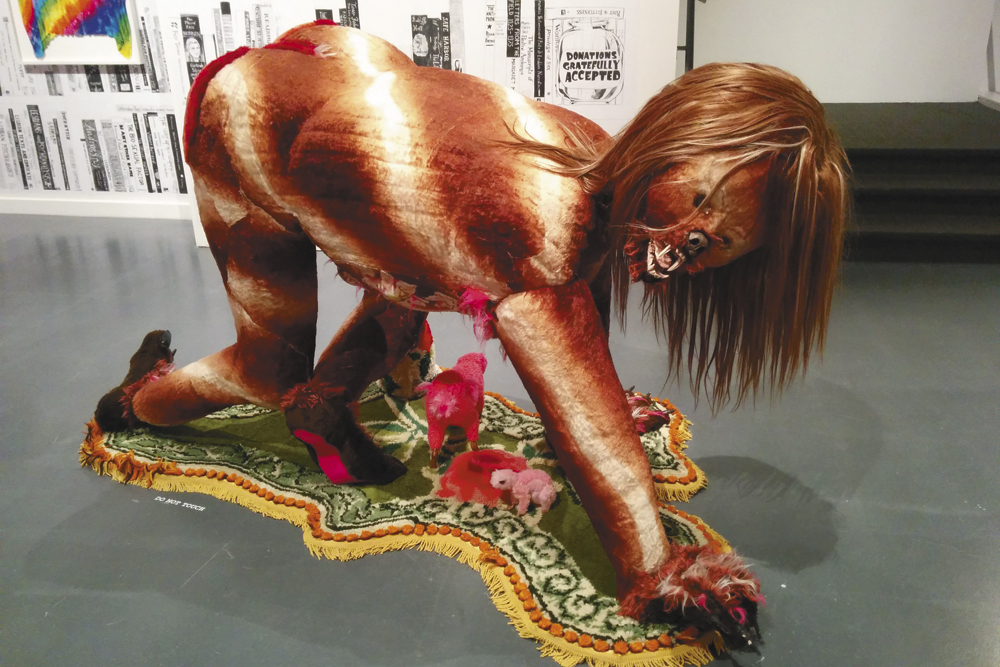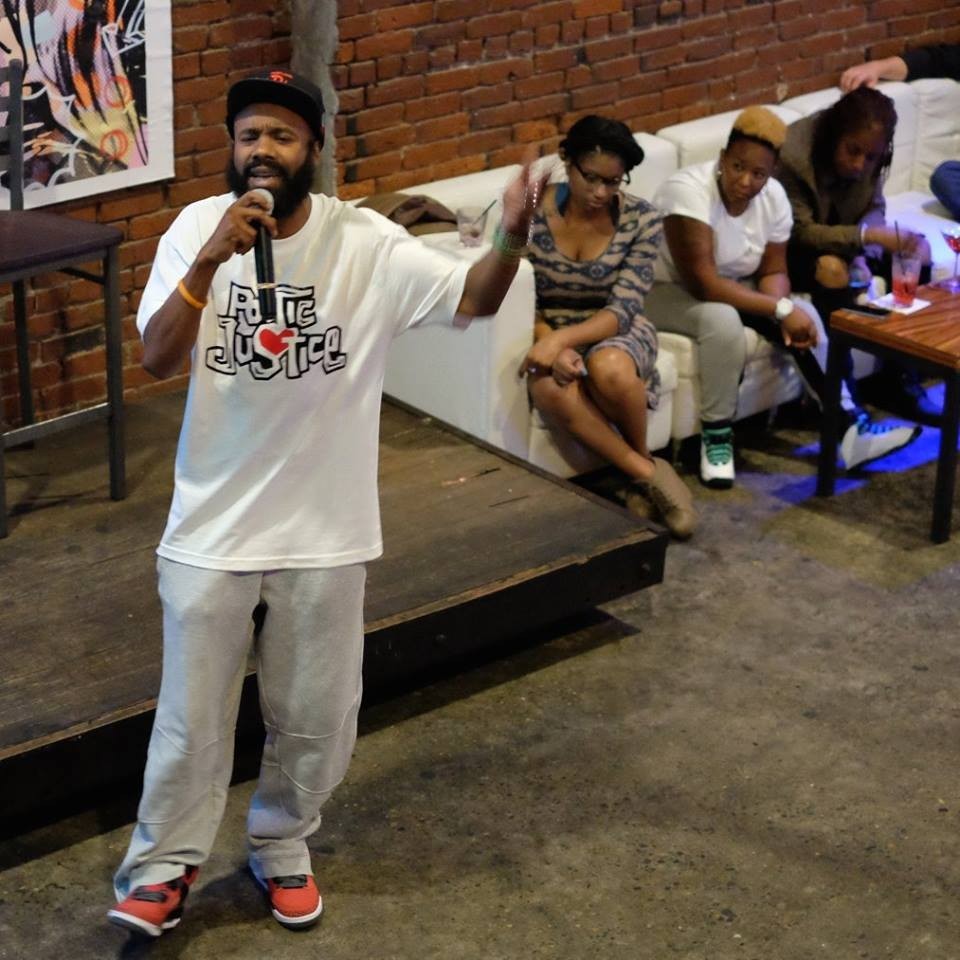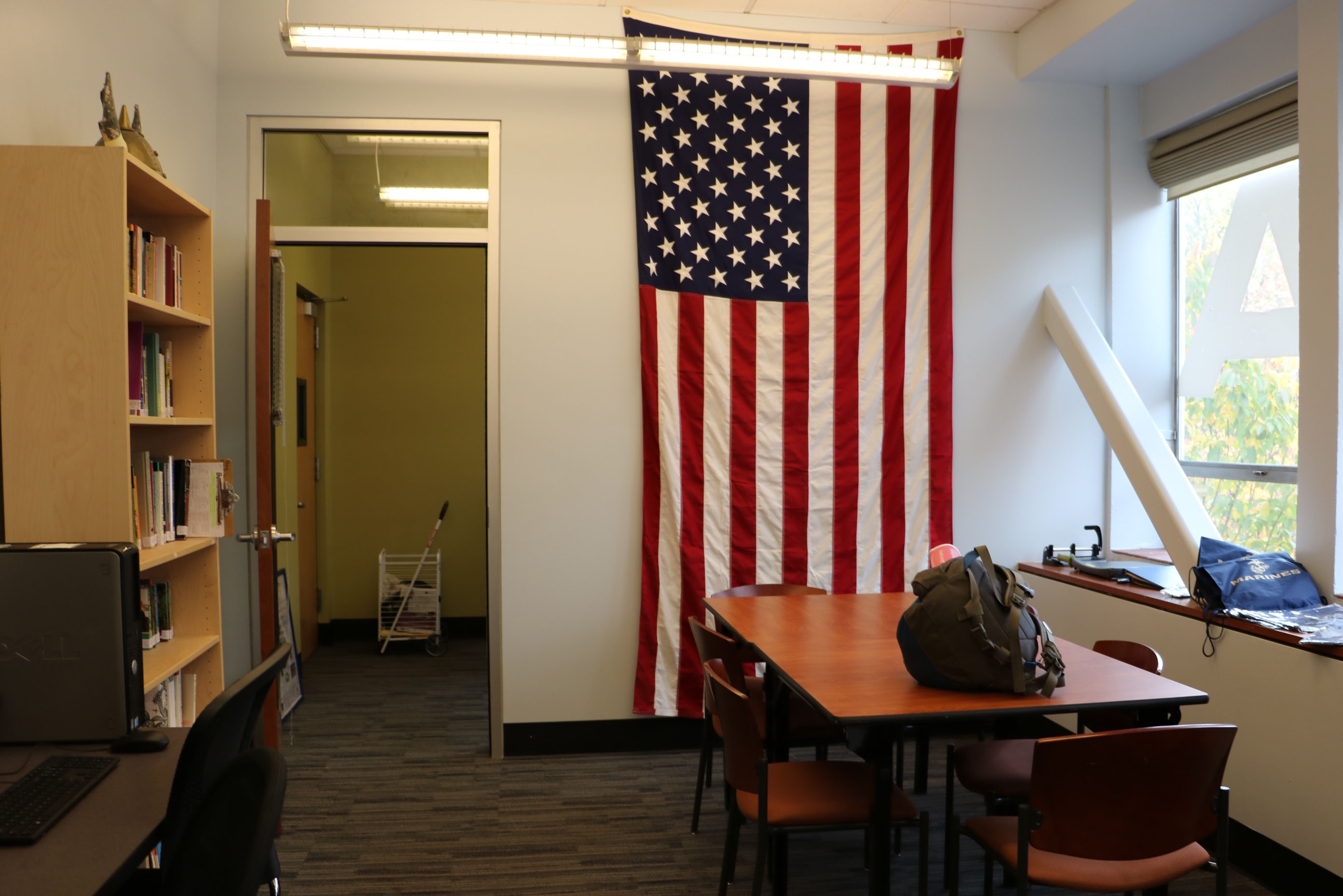The Museum of Contemporary Craft is currently featuring their exhibit, “Alien She,” one of the first projects to explore the impact of Riot Grrrl on artists today.
The display was organized by the Miller Gallery, at Carnegie Mellon University, and will be on display at the Museum of Contemporary Craft until Jan. 9, 2016.
Riot Grrrl was a punk feminist movement in the 1990s that sought to combat racism, sexism and homophobia through avenues such as letters, zines, local meetings, regional conferences, homemade videos and eventually chat rooms, listservs and message boards.
The exhibition features seven artists from around the country, also working in a variety of mediums, such as sculpture, film, photography, drawing, printmaking, new media, music and performance, among others. The museum and exhibit implies that Riot Grrrl is becoming more and more relevant to contemporary global culture.
On the ground floor of the museum, Allyson Mitchell’s Ladies Sasquatch greets visitors with three huge, monster-like fuzzy female bigfoots meant to depict what she calls a “‘feral sexuality’ outside prescriptive, heteronormative notions of beauty and lust toward a ‘queer utopian dream world.’”
Alongside these creatures is Mitchell’s wallpaper of photocopied drawings of feminist and queer book spines. Her panel asks the viewer to contemplate, “How do we both resist and reconcile our participation in oppressive systems?”
Upstairs, Stephanie Syjuco’s installation is a wall covered with FREE TEXT tear-off tab flyers advertising free downloadable online pdfs of various critical texts. Diane Derib, an exhibition attendant, noticed that many people linger at this installation.
“A lot of people have spent a lot of time there,” Derib said. “That wall gets a lot of attention, from what I’ve seen.”
Lauren Benoit, a visitor to Portland from Malden, Massachusetts, was excited that her trip included viewing “Alien She.”
Benoit was especially drawn to an installation presenting results from Miranda July’s participatory website “Learning to Love You More” and the new mobile app “Somebody,” in which people around the world post responses to prompts like “Write down a recent argument” or “Take a flash photo under your bed.”
“It’s really cool because the artist poses questions out to the public,” Benoit said. “So the public made the art, in a way.”
Another prompt of the exhibit invited people to post advice they would give to themselves in the past. One powerful response simply read: “Advice to me at 9 years old: TELL SOMEONE.”
“This is really interesting, and it got me thinking me about what advice I would give to myself,” Benoit said. “I read the whole, entire wall.”






